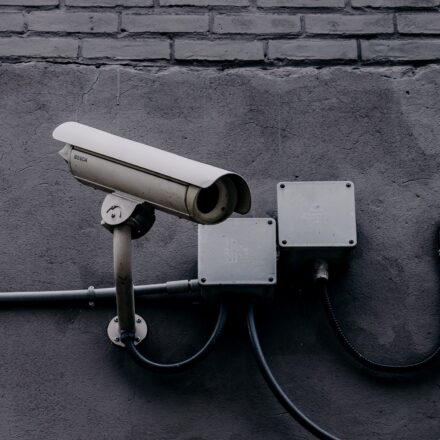Earlier this year, the Federal Court in Australian Mud Company Pty Ltd v Globaltech Corporation Pty Ltd (No 5) endorsed a split election for damages and an account of profits in a quantum decision for patent infringement.[1] This is the first time this issue has been decided (previous orders for split election were made by consent) and would allow a patentee to elect damages or an account of profits for each act of infringement to maximise compensation.
In this post, we look at Justice Besanko’s significant decision,[2] his findings on quantum, and what they mean for patentees moving forward, including how patentees can maximise compensation and minimise discounting.
What happened here?
This litigation commenced way back in 2016, when Hamilton first became a Broadway hit. Australian Mud Company Pty Ltd (Australian Mud) (the patentee) and Reflex Instruments Asia Pacific Pty Ltd (Reflex) (the exclusive licensee) alleged that Globaltech Corporation Pty Ltd and Globaltech Pty Ltd (together Globaltech) (the respondents) infringed Australian Mud’s patent AU 2010200162 titled ‘Core Sample Orientation’ (the Patent), which you can view here. Globaltech cross-claimed to have the Patent revoked.
Reflex manufactured and supplied core sample orientation tools embodying the Patented invention (ACT Tool). The respondents, Globaltech and Globaltech Pty Ltd, were part of the Boart Longyear Group, which included Boart Longyear Australia Pty Ltd (BLYA). Globaltech manufactured and supplied the infringing core orientation tools, specifically the Orifinder v3B and Orifinder v5 (together, the Infringing Tools) to BLYA at cost price with royalty payments.
The matter was bifurcated (questions of liability heard separately and before relief). On the question of liability, Justice Besanko found that the Patent was valid and infringed.[3] Globaltech exhausted all appeal avenues on liability, and special leave to appeal to the High Court was refused.
The question of relief
Section 122(1) of the Patents Act 1990 (Cth) (the Act) provides that the relief a court may grant for the infringement of a patent includes an injunction and, at the option of the plaintiff, either damages or an account of profits.
In its election for relief, Reflex sought from Globaltech:
- damages (Reflex’s lost profits) for the Infringing Tools which Globaltech sold to BLYA and which BLYA then rented to customers within Australia. Reflex argued that it would have entered into these rental transactions but for Globaltech’s infringing conduct and therefore it should be compensated on a one-to-one basis; and
- an account of profits for the Infringing Tools that Globaltech supplied to BLYA, which BLYA then rented to related overseas entities to use as part of their global fleet. Reflex sought the royalty payments paid from BLYA to Globaltech in relation to these tools.
Globaltech, however, argued that:
- Reflex was not entitled to split its election
- any damages needed to be discounted (in the realm of 30-40%) to accommodate a number of contingencies
- any account of profits should be subject to Globaltech’s losses.
Justice Besanko’s findings and implications
Split election
Justice Besanko found that the split election Reflex sought was valid. While it was well established that a patentee cannot receive both damages and an account of profits for the same infringement, it was equally well established that each act of patent infringement is a separate cause of action. Reflex was therefore entitled to exercise its election in a way that best suited its interests for each act of infringement.
His Honour rejected Globaltech’s argument that a split election required some sort of ‘distinguishing feature’ between the relevant infringements,[4] and reiterated that an innocent party is not limited to an election that mitigates the infringer’s loss.
One-to-one assumption and discount on damages
Justice Besanko awarded a small discount of 3%.
While discounting is often appropriate when dealing with a ‘but for’ counterfactual, Besanko J acknowledged that this was a rare circumstance where, but for the infringing products, Reflex was the only other supplier in the market of electronic core orientation tools.
This also meant that Reflex did not need detailed ‘best’ evidence on its ability to meet the increased demand for product in the counterfactual scenario. Despite the alleged generality of Reflex’s evidence, the Court was willing to accept that Reflex would have committed significant resources to meet demand. The Court also rejected Globaltech’s argument that discounts should reflect the parties’ different charging models. Once the number of rentals was determined, it was then appropriate to consider what Reflex would have charged for these rentals in the counterfactual scenario.
As Reflex supplied the relevant tools in a kit, Besanko J also awarded damages based on Reflex’s profits derived from the patented tools and other equipment that was supplied with them.
Deduction of losses
Justice Besanko did not deduct Globaltech’s losses from the account of profits claim.
While losses during any period could be considered when assessing account of profits, they needed to be ‘fairly attributable, in the sense of contributing, to the making of profits at a later point in time’. The burden therefore shifted to Globaltech, who had failed to prove by direct evidence or evidence warranting inference that its losses were ‘fairly attributable’ to the profits made on Infringing Tools. Both parties’ experts agreed that there was no information in Globaltech’s general ledger to enable them to conclude that the costs incurred produced the relevant profits in the relevant period.
Issues with proof
The decision broadly canvases the difficulties proving a quantum case and how the court accommodates this. Two further specific examples were: (1) the shortcomings in the Laos, Indonesia and New Zealand profits evidence (where Besanko J was willing to make commercial assumptions to establish Reflex’s case) and (2) the 80 tools issue (where Besanko J found the evidence insufficient to establish Reflex’s case).
Laos, Indonesia and New Zealand profits
There was evidence that royalties were payable to Globaltech for use of infringing tools in Laos, Indonesia and New Zealand but it was unclear from Globaltech’s general ledger whether these royalties had in fact been paid. While this was a gap in the evidence required to prove Reflex’s case, Besanko J considered the ‘commercial context’ shifted the burden to Globaltech to prove that the royalties were not in fact paid (as commercially there would need to be a ‘very good reason’ for this). Without any ‘good reason’ proffered by Globaltech, these amounts were included in the account of profits calculation.
The 80 tools issue
During the hearing, it became apparent that there were 80 tools that were converted to Infringing Tools free of charge and sent back to BLYA. It was unclear whether these were included in or additional to the number of tools in BLYA’s Australian fleet that the experts had been considering. Although the issues mainly resulted from the unreliable evidence of Globaltech’s Managing Director, Reflex bore the onus of establishing the number of lost rental opportunities which underpinned its damages claim. Unlike in relation to the Laos, Indonesia and New Zealand profits, Besanko J ‘reluctantly’ found that the evidence was insufficient to justify including an additional 80 tools in the damages claim.
Key takeaways
- Patentees can pick and choose to maximise compensation: With the benefit of discovery and evidence, patentees should consider making late elections and grouping relevant acts of infringement to maximise compensation. For example, a patentee may consider claiming damages for supply during periods where the infringer incurred significant losses that were specific to the infringer’s circumstances and would otherwise affect an account of profits claim. Respondents should be aware of the patentee’s right to make a separate election for each act of infringement and the range of infringements that are encompassed in the definition of ‘exploit’ in the Patents Act 1990 (Cth).[5]
- Minimise discounting by maximising certainties: To reduce the impact of discounting on a damages claim, the patentee’s evidence should focus on reducing uncertainty in the counterfactual. Respondents should seek examples of substitutable non-infringing products or methods that were available during the period of infringement to avoid compensation on a one-for-one basis that could counter any discounting.
- If respondents have sustained losses, prove them: An account of profits will be reduced by any losses sustained by the respondent, but it is the respondent’s burden to prove that these losses are ‘fairly attributable’ to the infringing conduct.
Featured image: ‘Drill core (Butte Mining District, Montana, USA) 2’, James St. John, 8 August 2010, Wikimedia Commons, CC BY 2.0 (cropped).
[1] Australian Mud Company Pty Ltd v Globaltech Corporation Pty Ltd (No 5) [2024] FCA 58 (AMC v Globaltech No 5). This post discusses Justice Besanko’s decision on quantum, which was decided in February this year but only published in May. The litigation was finally settled in August this year.
[2] A subsequent judgment dealt with outstanding issues on quantum, specifically, (1) whether a discount should be applied to the account of profits for tax paid that may not be recovered and (2) whether Globaltech should pay interest on amounts paid as tax: see Australian Mud Co Pty Ltd v Globaltech Corp Pty Ltd (No 7) [2024] FCA 445. This post focusses on the first, more significant, quantum decision.
[3] Australian Mud Company Pty Ltd v Globaltech Corporation Pty Ltd [2018] FCA 1839.
[4] Globaltech had argued this had been the case in LED Builders Pty Ltd v Eagle Homes Pty Ltd [1999] FCA 584 (where the parties consented to a separate election where infringing plans had been used to build homes) and Aristocrat Technologies Australia Pty Ltd v Konami Australia Pty Ltd (No 3) [2022] FCA 1373 (where the parties consented to a separate election for certain infringing products that had been supplied by converting existing machines on a no-charge basis).
[5] ‘Exploit’ is defined in Schedule 1 of the Patents Act 1990 (Cth) as ‘(a) where the invention is a product—make, hire, sell or otherwise dispose of the product, offer to make, sell, hire or otherwise dispose of it, use or import it, or keep it for the purpose of doing any of those things; or (b) where the invention is a method or process—use the method or process or do any act mentioned in paragraph (a) in respect of a product resulting from such use.’








